Bowline Knot


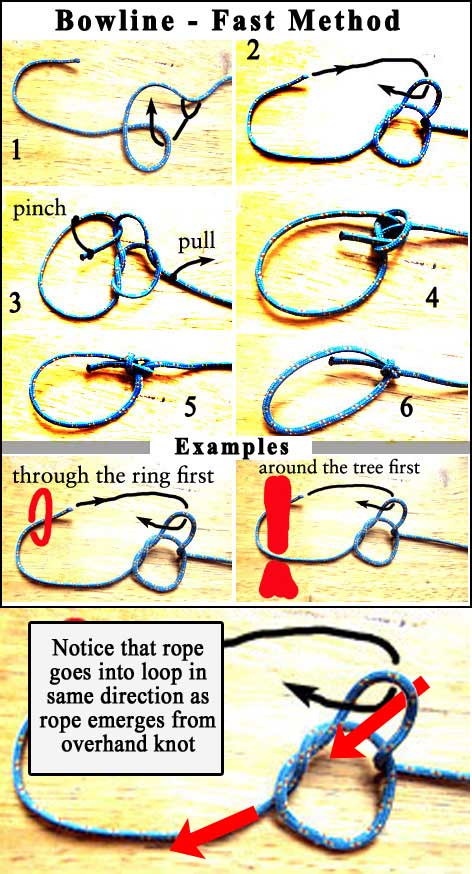
Butterfly Loop Knot, Alpine Butterfly

Clove Hitch Knot

Constrictor Knot


Double Half Hitch and Variation
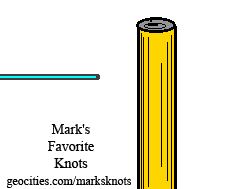

Backhand Hitch
Figure Eight Knot, Figure 8 Anchor

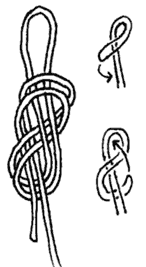
Fisherman's Knot

Using one end of rope, tie an Overhand Knot and slip other rope through, tighten down. NOW FLIP ROPE OVER AND REPEAT. After you tighten the two knots, pull them together and they should stack nicely next to each other.
Guyline Hitch Knot - adjustable
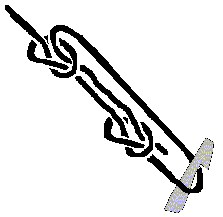
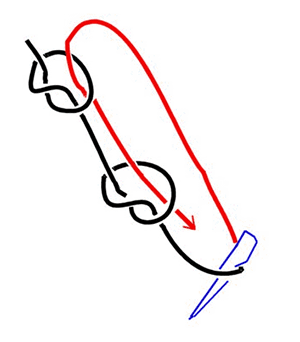
Here's a guy-line hitch, a little-known knot similar in function (but clearly not in structure) to the taut-line hitch and rolling hitch. Pull down the running part (toward the stake) to tighten the tent guy; pull the other way to loosen.
Start with two overhand knots fairly close to each other, rope round peg, back upwards then DOWN into the two knots. Will adjust by pulling and jams to your adjustment. Needs no other knot to hold tight! Also see Tautline Hitch below.
Tautline Hitch Knot, Midshipmans Hitch - adjustable
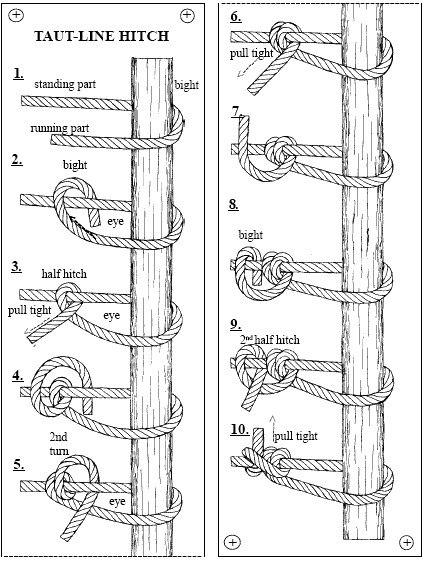
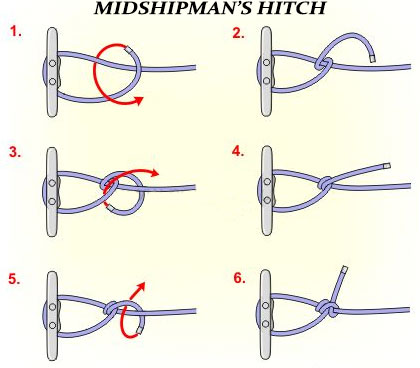
Noose Knot - simple
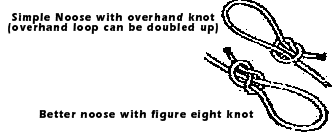
Slipknot, Strangle Noose Knot
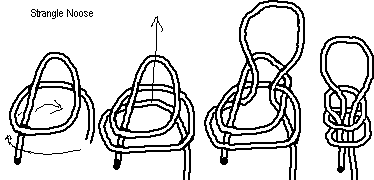
Hangman's Noose Knot

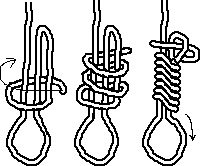
Lanyard Coil Knot (Reeve Coil Knot)
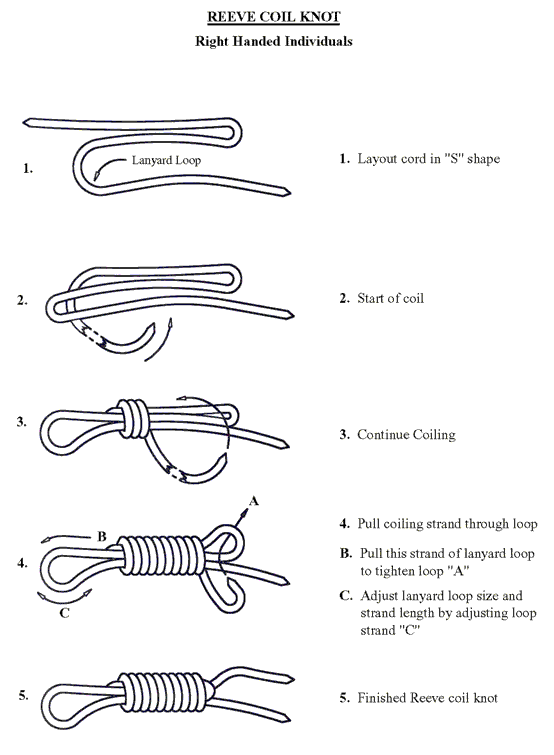
Trucker's Knot, Versatackle and variations
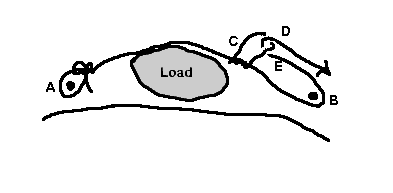
The Trucker's Hitch is useful for binding loads in place typically associated with such tasks for campers as hauling a canoe or other bulky gear on the top of a vehicle or in the bed of a truck or trailer. It is actually a combination of knots that are used to create a mechanical advantage in tying down the load. It is assumed that there are anchor points such as a rail or eyes which would be at points A and B in the illustration. A variety of knots can be used to accomplish the task. At point A for instance the attachment of the line can be accomplished with two half hitches or even a bowline loop tied around the anchor point. The line then proceeds over the load with an inline loop such as the Lineman's Loop (Ashley 1053) at point C. A variety of inline loop knots will serve as well at this point. The line then proceeds around or through anchor B and back through loop C as illustrated. Pulling on the free end can produce considerable tension in the line. Actually care should be exercised so as not to damage the load in some instances. Having achieved the desired tension pinch off the line at D to hold the tension. Work the free end around E in some fashion to secure. This may be two half hitches or even a slipped hitch if quick release is desired.
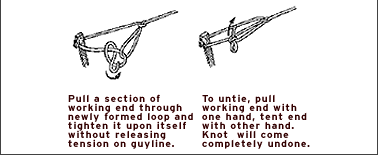
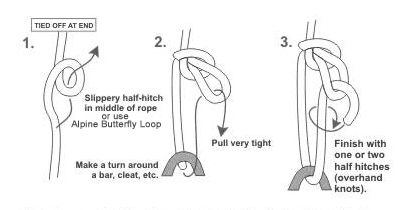
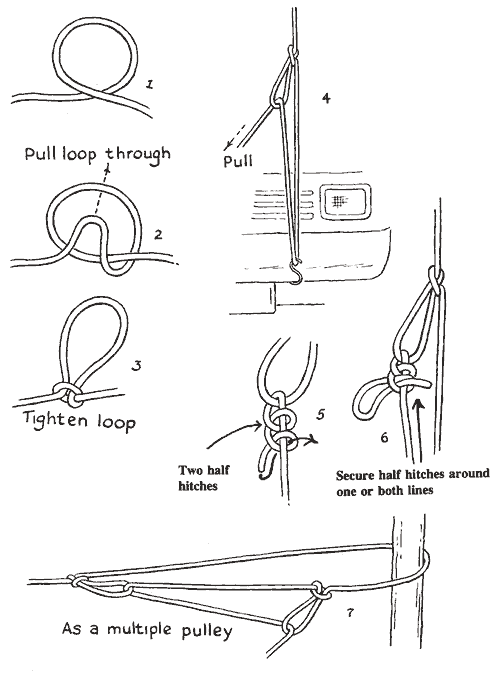
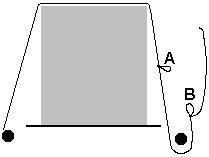
Sheet Bend Knot, Double Sheet Bend Knot


Half Windsor Tie Knot

Harness Bend Knot
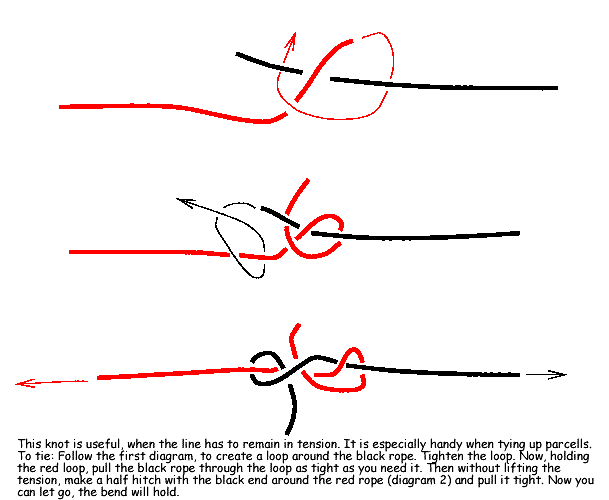
Join Ropes with Overhand Knot
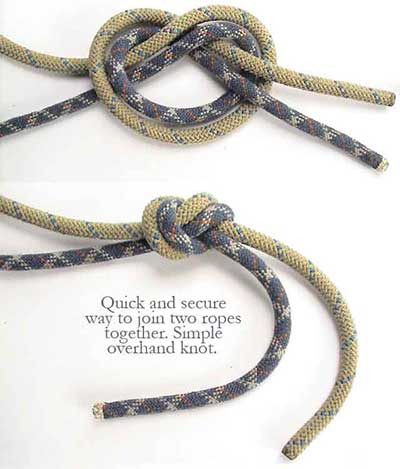
Tying off a reel or spool of line/string/rope for storage
Wind a loose coil of line over your finger and around the reel’s line surface so the tag end comes back to your finger. Tie a half hitch around the line that is over your finger, pull up and the knot will tighten on the line surface. Pull down and the knot will release.